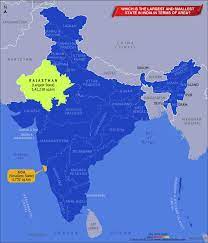
International Day for the Conservation of the Mangrove Ecosystem 2023: The International Day for the Conservation of the Mangrove Ecosystem is observed annually on July 26th. Its purpose is to increase global understanding of the significance of mangrove ecosystems as distinct, precious, and delicate environments. The day also aims to promote sustainable practises for maintaining, protecting, and utilising natural ecosystems. This International Day was formally declared by the UNESCO General Conference in 2015.
Daily Current Affairs Quiz: July 2023
Significance of the International Day for the Conservation of the Mangrove Ecosystem
- Mangroves are significant for the wellbeing, food security, and protection of coastal communities across the world.
- They extend support to the rich biodiversity, including fish and crustaceans.
- They act as a deterrent to tsunamis, storm surges, erosion, and rising sea levels.
- They also act as boundaries between sea and land as well as provide protection and food security to several coastal communities.
- Soils of Mangrove ecosystem acts as carbon sinks, and are capable of storing 10 times more carbon as compared to land-based forests.
- Mangroves in India
According to the Forest Survey Report 2021, mangrove cover in India has expanded by 17 square kilometres during the 2019 assessment. It now spread to 4,992 sq km. Three states in which highest increase in mangrove cover was observed include- Odisha (8 sq km), Maharashtra (4 sq km) and Karnataka (3 sq km).
History of International Day for the Conservation of the Mangrove Ecosystem
UNESCO established the International Day for the Conservation of the Mangrove Ecosystem on July 26th, 2015, during their General Conference to raise awareness about the crucial importance of mangrove ecosystems. The main objective of this day is to promote the preservation and sustainable development of mangrove forests.
Mangrove forests hold significant ecological importance as their intricate root systems serve as protective nurseries for various organisms, shielding them from predators, extreme heat, and powerful tides. Additionally, these coastal forests are highly effective in removing five times more carbon dioxide from the atmosphere compared to terrestrial forests.
Unfortunately, over the past four decades, the extent of mangrove forests has nearly halved due to various threats. The primary threat stems from shrimp farming, which involves clearing enormous areas of forest to create enclosed ponds for shrimp rearing. This practise entails the excessive use of antibiotics and pesticides to prevent disease and increase output, resulting in lasting damage to the forest’s biological balance.
Moreover, the valuable wood from these forests is often exploited and sold for substantial profits, and it is also used in charcoal production, leading to severe deforestation. The construction of roads, buildings, and the diversion of rivers for irrigation purposes further disrupt the mangrove habitat, particularly since most mangrove forests are located on estuaries.
Important takeaways for all competitive exams:
- UNESCO Headquarters: Paris, France
- UNESCO Founded: 16 November 1945, London, United Kingdom
- UNESCO Head: Audrey Azoulay; (Director-General)





